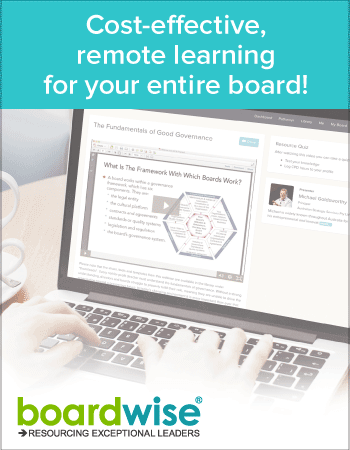finance
Common Accounting Terms for Not-for-profit Organisations
Published: November 19, 2025
Read Time: 9 minutes

Having a good level of financial understanding can enable an organisation’s board members to make better decisions about the financial future of the organisation they serve. Understanding common accounting terms can help boards to better understand and systematically record financial transactions, track spending and revenue, and interpret financial statements.
While they may not have the expertise to conduct reviews or audits, boards are in a unique position to provide oversight of accounting activities. Their understanding of financial statements and awareness of accounting standards can encourage more consistent reporting and strengthen the organisation’s financial position.
For example, a board member may provide input for addressing a financial issue before it becomes a major problem. One case study of the Daystar Foundation, an organisation that provided in-school education programs to children at risk, found that while it had a high return on investment, the lack of accounting knowledge was a stumbling block to securing grants.
This article defines some of the most common accounting terms used in record-keeping and reporting. It is intended for non-experts in accounting working in the charitable sector, and does not replace expert advice.
Accounts
An account is a set of financial transactions and their balance recorded in a organisation’s financial statements. It can be one of two types: accounts payable or accounts receivable.
Accounts payable are a liability because they represent money owed to vendors or creditors. They listed as ‘current liabilities’ on the financial statement, for example utility bills, rent, tax bills, invoices for services or goods, and bank loans.
In comparison, accounts receivable are the assets of an organisation and represent the items owned by an entity. They appear in the current assets section of the financial statement, for example, fees owed by a beneficiary or goods purchased. The balance sheet accounts contain the asset accounts (owned), liability accounts (owed), and equity accounts (difference between the two).
The income statement accounts contain the revenue accounts (income) and expense accounts (expenditures) balances. The accounts provide critical information needed to manage risks, budgeting, program evaluations, finances, and forecasting.
Annual Financial Report
The terms annual financial report and and annual report are often used interchangeably in the not-for-profit sector, but they are different. An annual financial report is a yearly summary that is specifically focused on an organisation’s financial health and activities, including detailed financial statements. The report informs all types of stakeholders about the activities, performance, financial position, and achievements of the entity. It is a legal obligation for most charities.
The annual financial report includes a statement of profit or loss, a statement of financial position, a statement of changes in equity, and a statement of cash flows. Notes and declarations are also added by the person completing the review or audit of the documents. The report is often introduced by using a board chair’s statement, which provides an overview of the organisation’s performance, strategies, and activities in narrative form.
Assets
Assets are things an organisation owns, whether purchased or built. These items can be used to deliver programs or accumulate resources. Assets can be fixed or current, intangible or tangible, depending on their lifecycle, nature, and purpose. Fixed assets such as furniture, vehicles, land, office equipment, or a building are tangible things purchased and used over several years or decades.
A tangible asset is something you can touch; made from material and used to provide a service, produce a good, or manage administrative work. In comparison, current assets like electronics or program related supplies have a shorter lifespan and are used within a year. In a pinch, they can be converted into cash quickly to cover debt and other financial liabilities.
In contrast, intangible assets have monetary value but are not made of material you can touch. For example, a reputable trademark or the company’s customer database all have value and can support growth and operational activities.
Australian Accounting Standards Board (AASB)
The Australian Accounting Standards Board (AASB) is the official regulator of accounting practices in Australia. The board establishing guidelines, systems, and processes for businesses and non-profits, and publishes a list of 1060 accounting standards. These standards help ensure consistency and quality in financial reporting and accounting activities.
Not-for-Profit organisations with a legal obligation to report their financial activities can apply these rules by implementing day-to-day best practices. The AASB standards are there to ensure these organisations have proper financial statements, accounting records and practices. Without them, companies are more likely to make mistakes in their financial reports or have insufficient internal controls, which could have negative consequences such as a damaged reputation or a penalty.
Australian Charities and Not-for-profits Commission (ACNC)
The ACNC is the main regulatory body responsible for overseeing and registering charities in Australia. It provides information about governance basics, manages the registration process for charities, and ensures they meet certain requirements for reporting. The ACNC has the power to investigate complaints about an organisation and revoke its charitable status.
It plays a critical role in regulating the duties of responsible people, which include: acting with reasonable care and diligence, being honest and fair, and making decisions in the best interest of the charity, avoiding misusing their position, ensuring the financial affairs of the entity are properly managed, and making sure it doesn’t operate while insolvent.
Deductible Gift Recipient (DGR)
Entities endorsed as a deductible gift recipient (DGR) can receive income tax deductible donations. This means that a donor making a contribution to a DGR can claim deductions on the annual income tax return, as long as the DGR entity provides a tax receipt. The deductible gift recipient (DGR) status carries with it certain legal responsibilities and only certain types of entities can qualify. The status may open doors for additional funding such as grants.
Expenses
Expenses represent the outflows and depletions of cash, inventory, property value, and equipment. Both operating and capital expenses are recorded in the income statements along with the assets, liabilities, equity, and income. The operating expenses are the losses and the expenditures that arise from the day-to-day activities of the organisation (operating expenditures).
Capital expenses are long-term investments such as appliances, building or land upkeep, furniture, and vehicles (capital expenditures). The value of capital expenses can depreciate with time and may need to be replaced.
Equity
The CPA defines equity as the “total assets less total liabilities, represented by accumulated reserves or funds.” In the not-for-profit sector, organisations rely on donations, grants, community bonds, or bank loans for equity financing. Equity refers to the net assets of the organisation, also called funds or reserves.
A common type of equity is the reserve, which is created from a common pool of net assets available to the entity and used to fulfil its long-term objectives and mission. The difference between the net assets and net liabilities represents the equity the NFP holds. To calculate it, use the following accounting formula: Equity = Assets – Liabilities. Refer to the statement of change in reserves, which records the net surplus or deficit, or the balance sheet, which summarises the company’s assets and liabilities.
Liabilities
Liabilities are the financial obligations of a company that may result in future sacrifices. If poorly managed, liabilities can have negative consequences on financial performance. They can affect the liquidity of a company, requiring a company to use its assets to pay off debt and limiting cash flow.
Current liabilities are the future economic losses occurring within the next 12 months as part of normal business operations. Non-current liabilities are the long-term financial obligations of a company, usually due after more than a year. They are often a result of financial agreements made with a third party.
Contingent liabilities are potential liabilities that may or may not arise during business. When an event or activity is likely to create a future obligation, and the amount that will be owed can be reasonably estimated, the liability is labelled ‘contingent’.
National Standard Chart of Accounts (NSCOA)
The National Standard Chart of Accounts (NSCOA) is a free data entry tool and data dictionary available to charities and not-for-profit organisations in Australia. A comprehensive data dictionary, it can assist with recording financial account activities by providing clear and consistent definitions and terminology. Standardised account names give consistency to reporting activities across not-for-profit organisations and sectors.
The data dictionary provides a definition of every terminology used in accounting, listing all of the terms that represent financial transactions categorised as assets, liabilities, expenses, equity, and income. It was initially designed for small community organisations that have financial reporting requirements, and has been voluntarily adopted by many Australian non-profits.
Public Benevolent Institution (PBI)
The ACNC defines a public benevolent institution as “a charitable institution with a main purpose of providing benevolent relief to people in need.” Its purpose is to relieve poverty or distress in communities through services and programs. Examples of services PBI organisations provide are: emergency or subsidised housing, hospices or hospitals, aged care facilities, and disability support services.
Revenue
Revenue is the inflow of money arising from the ordinary activities of an entity and resulting in increased equity. Revenue is generated through the sale of goods and services, fundraising, or passive income such as royalties or interest. It can be based on a one-time transaction, a service fee, program-based income, or recurring payments such as a membership fee.
Recurring revenue provides consistent cashflow while transaction-based revenue changes depending on demand. Project-based revenue depends on agreements made with other parties, and contributions such as grants or donations. In addition, revenue can come from money earned from operational activities and non-operating activities. Occasionally, an organisation may receive income from a bequest or endowment, or from the use of one of its assets.
Reference Materials
AASB. (2025). Accounting Standards.
ACNC. (2024). National Standard Chart of Accounts.
CFI. (2025). Accounts Payable vs Accounts Receivable.
ACNC. Annual Financial Reports. (Retrieved August 1st, 2025).
CPA. (2023). A Guide to Understanding the Financial Reports of Not-for-profit Entities.
Further Resources
Presentation of Financial Statements (AASB)
The Elements of Financial Statements
Share this Article
Recommended Reading
Recommended Viewing
Author
- About
-
Better Boards connects the leaders of Australasian non-profit organisations to the knowledge and networks necessary to grow and develop their leadership skills and build a strong governance framework for their organisation.
Found this article useful or informative?
Join 5,000+ not-for-profit & for-purpose directors receiving the latest insights on governance and leadership.
Receive a free e-book on improving your board decisions when you subscribe.
Unsubscribe anytime. We care about your privacy - read our Privacy Policy .









